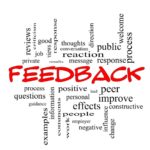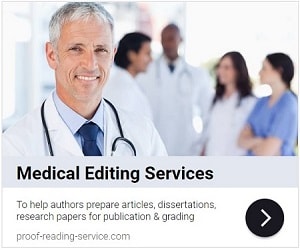Introduction
Publishing in academic journals is a rigorous process that ensures research is accurate, credible, and contributes meaningfully to a field of study. However, journal articles are not always perfect upon initial submission. Revisions and error corrections play a crucial role in refining academic work before and after publication. Addressing revisions effectively and identifying errors early can significantly improve the impact and reliability of a research paper.
This article explores the importance of revisions in journal articles, common errors encountered in academic writing, and best practices for handling corrections.
1. The Role of Revisions in the Publication Process
Revisions are a critical part of academic publishing. After a manuscript is submitted to a journal, it typically undergoes peer review, during which experts assess its quality and suggest improvements.
1.1 Types of Revisions
Editors and reviewers may request different levels of revisions:
- Minor Revisions: Small changes such as improving clarity, correcting formatting, or adding references.
- Major Revisions: Significant changes, including restructuring sections, addressing methodological concerns, or reanalyzing data.
- Revise and Resubmit: If substantial modifications are needed, the author may need to make extensive revisions and submit the manuscript as a new version.
✅ Importance: Properly revising a paper improves credibility, readability, and the overall impact of the research.
1.2 Responding to Reviewer Comments
When making revisions, authors should:
- Carefully read reviewer feedback and categorize suggested changes.
- Provide a clear response letter explaining how each issue has been addressed.
- Justify any points they choose not to change with logical reasoning.
- Ensure coherence between different sections after revisions.
Example of a Reviewer Response:
Reviewer Comment: “The statistical analysis lacks a justification for using ANOVA.”
Response: “We have now provided a rationale for using ANOVA on page 6 and added a reference to statistical best practices.”
2. Common Errors in Journal Articles
Even well-researched papers can contain errors. Identifying and correcting them is crucial for maintaining academic integrity.
2.1 Errors in Research Design and Methodology
- Inconsistent sampling methods: If data collection methods are not clearly defined or vary, results may be unreliable.
- Lack of control variables: Omitting relevant variables can lead to misleading conclusions.
- Poor statistical analysis: Using incorrect statistical tests or failing to report confidence intervals and effect sizes weakens findings.
✅ Solution: Always double-check methodology before submission and consult a statistician if necessary.
2.2 Citation and Referencing Mistakes
- Misattributed quotes: Failing to cite the correct source.
- Inconsistent citation style: Switching between APA, MLA, or Chicago styles within the same manuscript.
- Omitting key references: Failing to cite relevant studies that support the research.
✅ Solution: Use reference management software (e.g., EndNote, Mendeley) to keep citations accurate and consistent.
2.3 Logical and Argumentative Flaws
- Circular reasoning: Repeating the same argument without providing new evidence.
- Overgeneralization: Making broad claims that are not sufficiently supported by data.
- Ignoring counterarguments: Failing to engage with existing debates or alternative viewpoints.
✅ Solution: Carefully review logical flow and seek feedback from peers before submission.
2.4 Linguistic and Formatting Errors
- Grammatical mistakes: Run-on sentences, incorrect tense usage, and unclear phrasing can reduce readability.
- Figure and table inconsistencies: Mislabeled graphs or incorrect data points in tables.
- Typos and spelling errors: Small mistakes that reduce professionalism and credibility.
✅ Solution: Use grammar-checking tools (e.g., Grammarly) and conduct multiple proofreading rounds.
3. Addressing Errors in Published Journal Articles
Despite rigorous peer review, errors sometimes slip through to publication. Journals have established procedures for handling corrections post-publication.
3.1 Types of Post-Publication Corrections
- Corrigendum: Issued by the author to correct minor errors (e.g., typos, author names, formatting issues).
- Erratum: Issued by the journal to correct publisher errors (e.g., misprinted tables, incorrect figure placement).
- Retraction: Issued when a major flaw, ethical breach, or fabrication is discovered, invalidating the research.
- Expression of Concern: A warning from the journal regarding potential problems with the research that require further investigation.
✅ Solution: Authors should contact the journal immediately upon discovering a post-publication error to arrange for a formal correction.
3.2 Ethical Responsibility in Error Correction
Researchers must uphold ethical integrity by acknowledging and correcting mistakes openly.
Best Practices:
- Be transparent about errors and seek correction promptly.
- Work collaboratively with journal editors to address issues.
- Ensure future research cites the corrected version to avoid spreading misinformation.
4. Best Practices for Avoiding Errors and Strengthening Revisions
4.1 Conduct Thorough Pre-Submission Checks
Before submitting a manuscript, authors should:
- Verify research methodology and ensure clarity in data reporting.
- Run plagiarism checks to avoid unintentional duplication.
- Ensure proper citation practices to give credit to relevant work.
- Perform multiple rounds of editing to eliminate linguistic and logical errors.
✅ Tip: Having a fresh pair of eyes, such as a colleague or professional editor, review the paper can catch overlooked mistakes.
4.2 Engage in Peer Review Before Submission
Engaging in informal peer review before journal submission can help detect errors and refine arguments.
✅ Tip: Sharing drafts with colleagues or research groups helps identify weaknesses early.
4.3 Keep a Revision Log
Maintaining a detailed revision log can help track changes and respond effectively to reviewer comments.
Example format:
| Revision No. | Section | Change Description | Status |
|---|---|---|---|
| 1 | Methods | Added details on sample size selection | Completed |
| 2 | Discussion | Expanded analysis of findings | In Progress |
✅ Tip: A revision log keeps revisions organized and transparent.
4.4 Learn from Past Mistakes
Every researcher faces revision challenges and manuscript rejections. Keeping track of previous reviewer comments and errors can help prevent recurring issues.
✅ Tip: Maintain a personal database of reviewer feedback to improve future writing.
Conclusion
Revisions and error correction are essential components of producing high-quality academic journal articles. By embracing the revision process and addressing errors proactively, researchers enhance the clarity, accuracy, and impact of their work.
Understanding common errors, responding to reviewer feedback effectively, and maintaining ethical responsibility in error correction are critical skills for any academic. Rather than viewing revisions as setbacks, they should be seen as opportunities for improving research and contributing meaningfully to the academic community.
With careful attention to detail and a commitment to continuous improvement, researchers can minimize errors, strengthen their arguments, and achieve successful publication in reputable journals.














